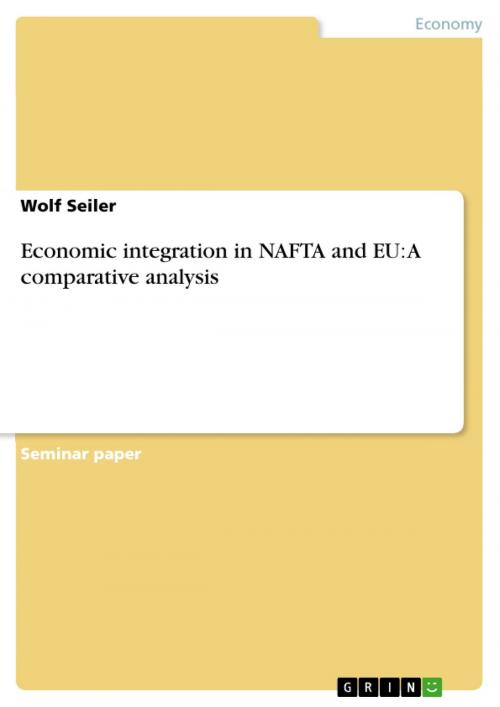Economic integration in NAFTA and EU: A comparative analysis
Nonfiction, Social & Cultural Studies, Political Science, Politics, Economic Policy| Author: | Wolf Seiler | ISBN: | 9783638821070 |
| Publisher: | GRIN Publishing | Publication: | July 5, 2007 |
| Imprint: | GRIN Publishing | Language: | English |
| Author: | Wolf Seiler |
| ISBN: | 9783638821070 |
| Publisher: | GRIN Publishing |
| Publication: | July 5, 2007 |
| Imprint: | GRIN Publishing |
| Language: | English |
Seminar paper from the year 2005 in the subject Business economics - Economic Policy, grade: 1,3, LMU Munich, course: Regionalisierung der internationalen Handelsordnung?, 38 entries in the bibliography, language: English, abstract: The two regional trading agreements NAFTA and EU differ greatly, not only in their economic but also political approaches to regional integration. The paper describes the differences in the two regional trading agreements starting with the respective institutions and their structures. After that follows an analysis of indicators of their economic integration that will in a next step allow us to assess and compare them. This general assesment is followed by a more detailed comparison of how poorer members of NAFTA and EU, namely the cohesion countries in the EU and Mexico in NAFTA, have profited from the regional economic integration drives. Concluding remarks are given on positive and negative integration in both regional agreements.
Seminar paper from the year 2005 in the subject Business economics - Economic Policy, grade: 1,3, LMU Munich, course: Regionalisierung der internationalen Handelsordnung?, 38 entries in the bibliography, language: English, abstract: The two regional trading agreements NAFTA and EU differ greatly, not only in their economic but also political approaches to regional integration. The paper describes the differences in the two regional trading agreements starting with the respective institutions and their structures. After that follows an analysis of indicators of their economic integration that will in a next step allow us to assess and compare them. This general assesment is followed by a more detailed comparison of how poorer members of NAFTA and EU, namely the cohesion countries in the EU and Mexico in NAFTA, have profited from the regional economic integration drives. Concluding remarks are given on positive and negative integration in both regional agreements.















